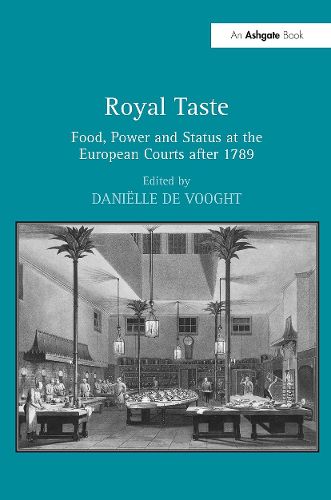Readings Newsletter
Become a Readings Member to make your shopping experience even easier.
Sign in or sign up for free!
You’re not far away from qualifying for FREE standard shipping within Australia
You’ve qualified for FREE standard shipping within Australia
The cart is loading…






The explicit association between food and status was, academically speaking, first acknowledged on the food production level. He who owned the land, possessed the grain, he who owned the mill, had the flour, he who owned the oven, sold the bread. However, this conceptualization of power is dual; next to the obvious demonstration of power on the production level is the social significance of food consumption. Consumption of rich food"in terms of quantity and quality "was, and is, a means to show one's social status and to create or uphold power. This book is concerned with the relationship between food consumption, status and power. Contributors address the 'old top' of society, and consider the way kings and queens, emperors and dukes, nobles and aristocrats wined and dined in the rapidly changing world of the late eighteenth and nineteenth centuries, where the bourgeoisie and even the 'common people' obtained political rights, economic influence, social importance and cultural authority. The book questions the role of food consumption at courts and the significance of particular foodstuffs or ways of cooking, deals with the number of guests and their place at the table, and studies the way the courts under consideration influenced one another. Topics include the role of sherry at the court of Queen Victoria as a means of representing middle class values, the use of the truffle as a promotional gift at the Savoy court, and the influence of European culture on banqueting at the Ottoman Palace. Together the volume addresses issues of social networks, prestige, politics and diplomacy, banquets and their design, income and spending, economic aims, taste and preference, cultural innovations, social hierarchies, material culture, and many more social and cultural issues. It will provide a useful entry into food history for scholars of court culture and anyone with an interest in modern cultural history.
$9.00 standard shipping within Australia
FREE standard shipping within Australia for orders over $100.00
Express & International shipping calculated at checkout
The explicit association between food and status was, academically speaking, first acknowledged on the food production level. He who owned the land, possessed the grain, he who owned the mill, had the flour, he who owned the oven, sold the bread. However, this conceptualization of power is dual; next to the obvious demonstration of power on the production level is the social significance of food consumption. Consumption of rich food"in terms of quantity and quality "was, and is, a means to show one's social status and to create or uphold power. This book is concerned with the relationship between food consumption, status and power. Contributors address the 'old top' of society, and consider the way kings and queens, emperors and dukes, nobles and aristocrats wined and dined in the rapidly changing world of the late eighteenth and nineteenth centuries, where the bourgeoisie and even the 'common people' obtained political rights, economic influence, social importance and cultural authority. The book questions the role of food consumption at courts and the significance of particular foodstuffs or ways of cooking, deals with the number of guests and their place at the table, and studies the way the courts under consideration influenced one another. Topics include the role of sherry at the court of Queen Victoria as a means of representing middle class values, the use of the truffle as a promotional gift at the Savoy court, and the influence of European culture on banqueting at the Ottoman Palace. Together the volume addresses issues of social networks, prestige, politics and diplomacy, banquets and their design, income and spending, economic aims, taste and preference, cultural innovations, social hierarchies, material culture, and many more social and cultural issues. It will provide a useful entry into food history for scholars of court culture and anyone with an interest in modern cultural history.